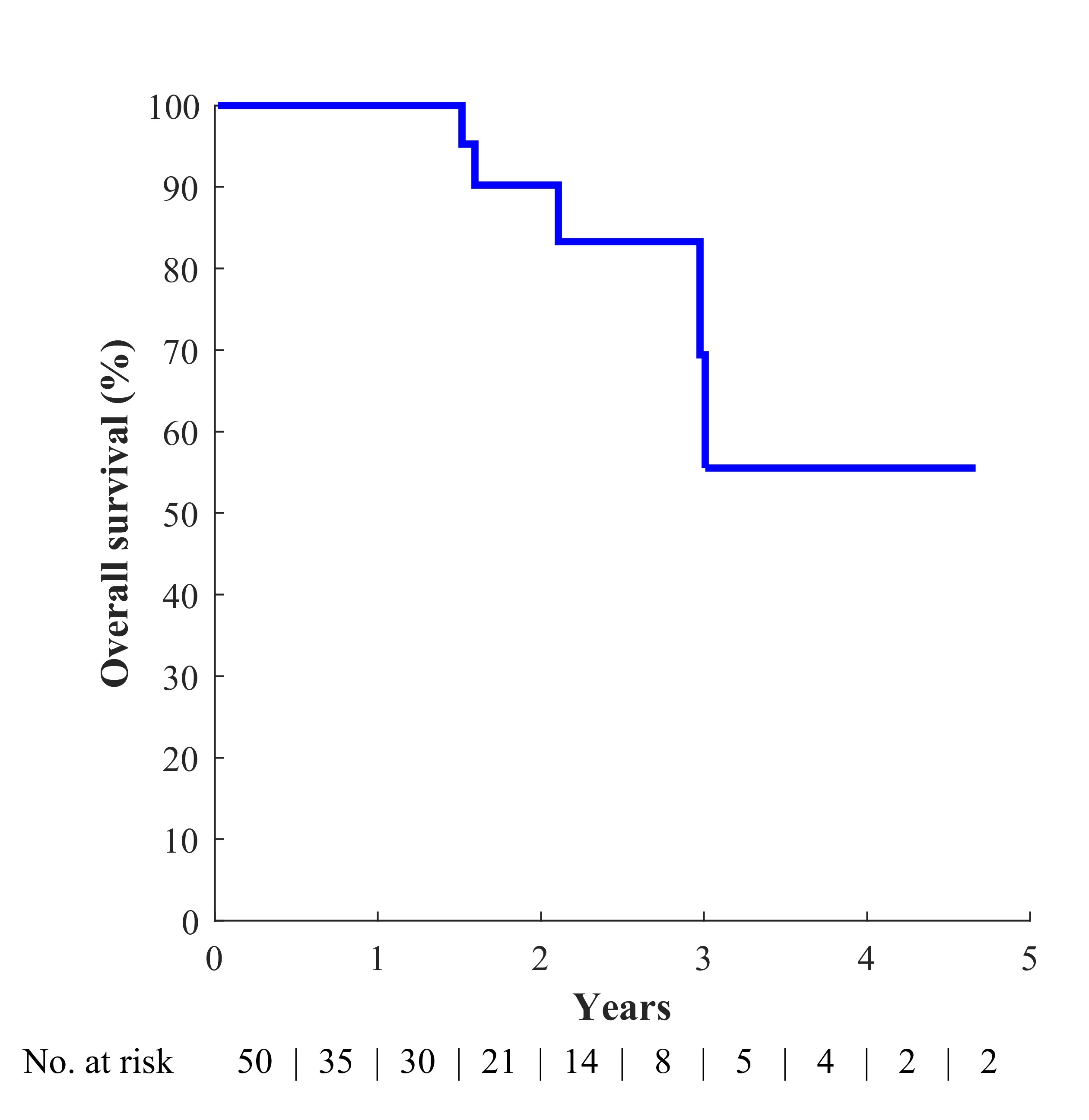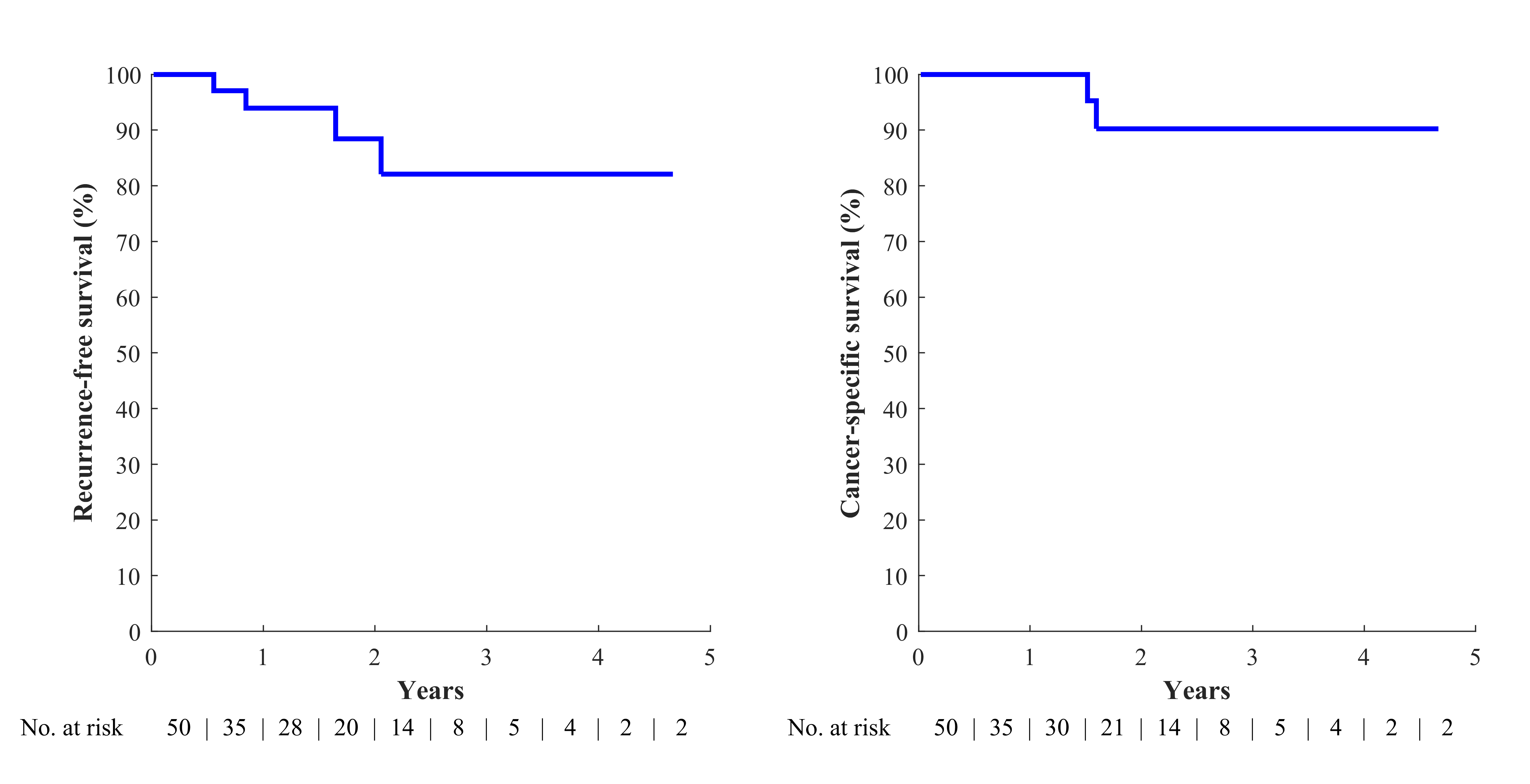After a median follow-up of 4.8 years, only one
local recurrence in the chest wall occurred and there was no regional
recurrence. The distant metastatic rate was 6%. The long-term recurrence-free
survival (RFS) rate was 80% at 5 years. The cause-specific survival rate was
90% at 5 years. The overall survival rate was 55.5% at 5 years. There were 44 (88%)
patients with Grade 1 or 2 early toxicity, consisting mainly of dermatitis.
There was no Grade 3 or higher acute toxicity registered. Late toxicity was mainly
Grade 1 or 2 subcutaneous fibrosis, lymphoedema, and neuropathy except
for one patient with Grade 3 fibrosis.
Figure legends
Figure 1: Overall survival (OS) of elderly patients treated with LR HFRT OS was calculated from time of radiotherapy start to time to time of death. Median follow-up time was 4.8 years.
Figure 2: Recurrence-free survival (RFS) and Cancer-specific survival (CSS) of elderly patients treated with LR HFRT Local/ locoregional failure (LRF), distant metastasis (DM) and death events were retrospectively recorded. RFS and CSS were calculated from time of radiotherapy start to time when first event recorded. Median follow-up time was 4.8 years.

